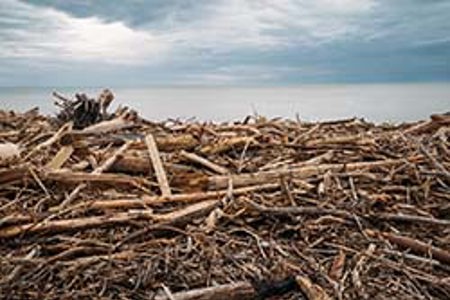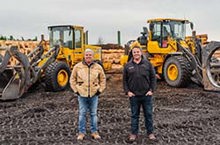
Once again woody debris filled culverts in Gisborne’s Wainui Stream after late June’s storm - a build-up described as “a lot worse than Gabrielle”.
It comes just months after a group of local surfers cleaned up the area, removing debris that had accumulated from previous storms.
Surfer, Jonas Te Aho, who helped lead the last clean-up with his surf crew Te Moananui a Kiwa, says it is the worst build-up he has seen: “A lot worse than Gabrielle.”
This waterway is one of many areas Gisborne District Council will have to clean up again — a recurring theme following severe weather events.
“Where does it start and where does it stop?” asks Mr Te Aho.
“It’s not just on our coast. It’s further up as well. Our whole region’s probably feeling it.
“Council might contract someone to clean up the beach, and then it’s back to where it is now.
“We live right next to the stream, but we’ve also got neighbours who are more low-lying than us having the debris washing up over on to their lawns and sections.
“It must be a bit scary for them, especially for the older ones.”
Council environmental monitoring and science manager, Dr Amber Dunn, says woody material has always washed up on Wainui Beach in varying amounts.
“This woody material will occupy and gather in the lower-lying regions of the beach. This is often around stream mouths or stormwater outlets e.g. Stock Route beach access and School access.
“The swell direction affects where woody material accumulates on the beach and in stream mouths/outlets.”
The latest debris came from a combination of large waves from the southeasterly direction, strong onshore winds and high tides. These forces pushed woody debris up the Wainui Stream towards the Murphy Road culverts.
“The origin of this wood has not been investigated,” she says.
Wainui local, Jennifer Herre Hindmarsh, who notified the council about the mess, says she has not seen it this high since the July 2015 build-up.
“The pile of wood is a danger to public infrastructure, the stream banks and anyone who happens to be here when we have big waves,” she says.
“It doesn’t have to be a storm here. It can be a day like today, where there’s big swells and big waves. They surge up the stream.
“It’s like watching a tidal wave, and you know with all those big logs there, it’ll just push those logs way up.
“If people were standing on the bank unaware... it could be really dangerous.”
Community lifelines director, Tim Barry, says the council’s woody debris team has been visiting sites across the region that are known risk areas to assess the amounts and urgency of each area.
“This woody debris removal will be prioritised and removed when ground conditions allow this work to happen.
“However, knowing what we know so far, the bill will be in the millions and we do not know yet what proportion of this will be spent on the clean-up of woody debris.
“We understand our community’s concern. It’s disheartening for all of us to see the magnitude of the woody debris return that we’d recently cleaned up.”










